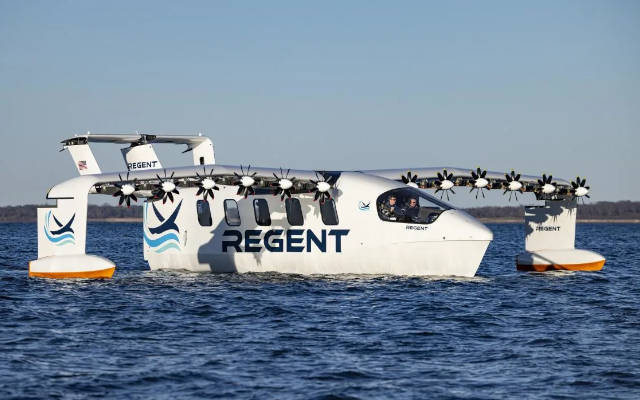 EDITOR'S PICK
EDITOR'S PICK
Realistic Assessment: Horse Powertrain's C15 Engine and the Future of EV
22 Sep 2025 | Synopsis
 Horse Powertrain's C15 is a compact, Euro 7-compliant gasoline generator designed for extended-range EVs. It activates only when battery charge drops, offering 70 kW for sedans and 120 kW for larger vehicles. While efficient, it still emits 120–140 g CO₂/km when active. Backed by Renault, Geely, and Aramco, Horse can mass-produce it—but OEM adoption is key. EREVs face pressure from falling battery costs and rising BEV capabilities.
Horse Powertrain's C15 is a compact, Euro 7-compliant gasoline generator designed for extended-range EVs. It activates only when battery charge drops, offering 70 kW for sedans and 120 kW for larger vehicles. While efficient, it still emits 120–140 g CO₂/km when active. Backed by Renault, Geely, and Aramco, Horse can mass-produce it—but OEM adoption is key. EREVs face pressure from falling battery costs and rising BEV capabilities.In Just 15 Years, No One Will Own an Electric Car - Here's What Will Replace Them Instead
21 Sep 2025 | Synopsis
 EVs are central to a coming shift in mobility: by 2040, personal electric car ownership may disappear as automakers pivot to subscription-based, software-driven models. EVs will serve as platforms for autonomous fleets, shared transport, and tiered digital services. Younger users prefer access over ownership, and manufacturers are redesigning vehicles as connected devices - raising concerns over repair rights, data control, and user autonomy.
EVs are central to a coming shift in mobility: by 2040, personal electric car ownership may disappear as automakers pivot to subscription-based, software-driven models. EVs will serve as platforms for autonomous fleets, shared transport, and tiered digital services. Younger users prefer access over ownership, and manufacturers are redesigning vehicles as connected devices - raising concerns over repair rights, data control, and user autonomy.US Firm Bids To Bring 'Flying Boats' to Scottish Islands Transport Network
21 Sep 2025 | Synopsis
 US firm Regent is partnering with Scotland’s Hitrans to explore using electric "flying boats" called Seagliders for island transport. These vessels combine boat, hydrofoil, and low-altitude flight technologies, reaching speeds up to 180 mph. A 12-passenger model may launch in Orkney by 2026–2027, with a larger version planned for 2030. The project aims to improve connectivity and reduce emissions across the Highlands and Islands.
US firm Regent is partnering with Scotland’s Hitrans to explore using electric "flying boats" called Seagliders for island transport. These vessels combine boat, hydrofoil, and low-altitude flight technologies, reaching speeds up to 180 mph. A 12-passenger model may launch in Orkney by 2026–2027, with a larger version planned for 2030. The project aims to improve connectivity and reduce emissions across the Highlands and Islands.The Electric Bus You Thought Was Dead - But Isn't
19 Sep 2025 | Synopsis
 Modern trolleybuses using in-motion charging (IMC) are making a comeback as cost-effective, grid-friendly alternatives to battery-electric buses. They charge via overhead wires and run off-wire using small batteries, reducing infrastructure and maintenance costs. Ideal for dense, hilly cities or those with legacy systems, they face funding and public perception challenges but offer strategic advantages in urban transit electrification.
Modern trolleybuses using in-motion charging (IMC) are making a comeback as cost-effective, grid-friendly alternatives to battery-electric buses. They charge via overhead wires and run off-wire using small batteries, reducing infrastructure and maintenance costs. Ideal for dense, hilly cities or those with legacy systems, they face funding and public perception challenges but offer strategic advantages in urban transit electrification.European Study Finds E-bikes Carry A Much Greater Crash Risk Than E-scooters
19 Sep 2025 | Synopsis
 A new study from Chalmers University, featured in Air Quality News, finds that e-bikes pose a significantly higher crash risk than e-scooters—over eight times greater when accounting for exposure factors like trip distance and duration. The research analyzed GPS data from shared micromobility services across seven European cities, offering a more accurate comparison than previous studies. The authors call for better data-driven safety policies.
A new study from Chalmers University, featured in Air Quality News, finds that e-bikes pose a significantly higher crash risk than e-scooters—over eight times greater when accounting for exposure factors like trip distance and duration. The research analyzed GPS data from shared micromobility services across seven European cities, offering a more accurate comparison than previous studies. The authors call for better data-driven safety policies.
 EVWorld Exclusive
EVWorld Exclusive
China's Thorium Breakthrough: A Strategic Leap Toward Safer, Sustainable Nuclear Energy
03 Nov 2025 |  China's Thorium Molten Salt Reactor achieved the world's first thorium-to-uranium fuel conversion, proving thorium can generate uranium-233 for future reactors. The experimental setup doesn't produce electricity but validates fuel viability. China aims to build a 100 MW demonstration reactor by 2035. This breakthrough supports safer, scalable nuclear energy and positions China as a leader in fourth-generation reactor technology.
China's Thorium Molten Salt Reactor achieved the world's first thorium-to-uranium fuel conversion, proving thorium can generate uranium-233 for future reactors. The experimental setup doesn't produce electricity but validates fuel viability. China aims to build a 100 MW demonstration reactor by 2035. This breakthrough supports safer, scalable nuclear energy and positions China as a leader in fourth-generation reactor technology.
Carbon Neutral Summit 2025 Preview - The Hard Questions Automakers Must Answer
01 Nov 2025 |  The EMEA Automotive Carbon Neutral Summit 2025 will confront the gap between ambition and execution. Automakers must scale low‑carbon technologies, decarbonize sprawling supply chains, and secure renewable energy for factories and charging networks. Executives will push for clear policy, carbon pricing, and stable investment signals. Circular economy practices and global competition add urgency. The challenge: make carbon neutrality practical, profitable, and fast enough to meet climate goals.
The EMEA Automotive Carbon Neutral Summit 2025 will confront the gap between ambition and execution. Automakers must scale low‑carbon technologies, decarbonize sprawling supply chains, and secure renewable energy for factories and charging networks. Executives will push for clear policy, carbon pricing, and stable investment signals. Circular economy practices and global competition add urgency. The challenge: make carbon neutrality practical, profitable, and fast enough to meet climate goals.
Can Food Waste Fuel America's Skies? The Promise And Pitfalls Of Trash-To-JetA
01 Nov 2025 |  Scientists are developing ways to turn America's massive food waste stream into sustainable aviation fuel. Using processes like hydrothermal liquefaction, discarded scraps can be converted into biocrude and refined into jet-ready fuel. At full scale, it could replace only a fraction of U.S. daily jet fuel demand, but it would cut landfill methane and diversify supply. Major hurdles remain: costly collection, dispersed feedstock, certification, and economics compared to fossil fuel.
Scientists are developing ways to turn America's massive food waste stream into sustainable aviation fuel. Using processes like hydrothermal liquefaction, discarded scraps can be converted into biocrude and refined into jet-ready fuel. At full scale, it could replace only a fraction of U.S. daily jet fuel demand, but it would cut landfill methane and diversify supply. Major hurdles remain: costly collection, dispersed feedstock, certification, and economics compared to fossil fuel.
Can Coal Power the AI Boom? Wyoming's Bet on a Fading Fuel
01 Nov 2025 |  Wyoming's coal is being promoted as vital for powering the AI boom, but the market reality tells another story. Utilities continue retiring coal plants as cheaper wind, solar, and natural gas dominate. Lease auctions draw little interest, and even China is pairing coal with massive renewable growth. Analysts warn AI demand may be overstated, leaving coal an expensive detour. The conclusion: coal is unlikely to fuel America's AI future.
Wyoming's coal is being promoted as vital for powering the AI boom, but the market reality tells another story. Utilities continue retiring coal plants as cheaper wind, solar, and natural gas dominate. Lease auctions draw little interest, and even China is pairing coal with massive renewable growth. Analysts warn AI demand may be overstated, leaving coal an expensive detour. The conclusion: coal is unlikely to fuel America's AI future.
America's Untapped Power: Why Wave Energy Still Waits For Its Moment
01 Nov 2025 |  America's waves hold vast untapped energy - enough to power over half the nation's electricity needs. Yet wave power lags behind solar and wind. Devices must survive corrosive seas and violent storms, while no single design has emerged as dominant. Developers also face years of regulatory hurdles and high costs that deter investors. New test sites like Oregon's PacWave aim to prove the technology, offering hope that wave energy can finally move from promise to reality.
America's waves hold vast untapped energy - enough to power over half the nation's electricity needs. Yet wave power lags behind solar and wind. Devices must survive corrosive seas and violent storms, while no single design has emerged as dominant. Developers also face years of regulatory hurdles and high costs that deter investors. New test sites like Oregon's PacWave aim to prove the technology, offering hope that wave energy can finally move from promise to reality.
 03 Nov 2025 13:48:56 UTC |
RECENT PODCASTS
Tesla RoboTaxis Crash More Than Waymo - 35,000 Rivian Amazon Vans
SEARCH RSSTREAM
 40 New Postings In Past 24 Hours
40 New Postings In Past 24 Hours
Category:policy
Region:AsiaPacific
Date:03 Nov 2025
Category:mobility
Region:AsiaPacific
Date:02 Nov 2025
Category:mobility
Region:AsiaPacific
Date:02 Nov 2025
Category:energy
Region:Europe
Date:02 Nov 2025
Category:mobility
Region:NoAmerica
Date:02 Nov 2025
Category:policy
Region:NoAmerica
Date:02 Nov 2025
Category:mobility
Region:NoAmerica
Date:02 Nov 2025
Category:energy
Region:NoAmerica
Date:02 Nov 2025
Category:mobility
Region:Europe
Date:02 Nov 2025
Category:finance
Region:NoAmerica
Date:02 Nov 2025
Category:mobility
Region:Global
Date:02 Nov 2025
Category:mobility
Region:NoAmerica
Date:02 Nov 2025
Category:mobility
Region:NoAmerica
Date:02 Nov 2025
Category:finance
Region:NoAmerica
Date:02 Nov 2025
Category:finance
Region:AsiaPacific
Date:02 Nov 2025
Category:mobility
Region:AsiaPacific
Date:02 Nov 2025
Category:finance
Region:AsiaPacific
Date:02 Nov 2025
Category:mobility
Region:AsiaPacific
Date:02 Nov 2025
Category:mobility
Region:AsiaPacific
Date:02 Nov 2025
Category:finance
Region:AsiaPacific
Date:02 Nov 2025